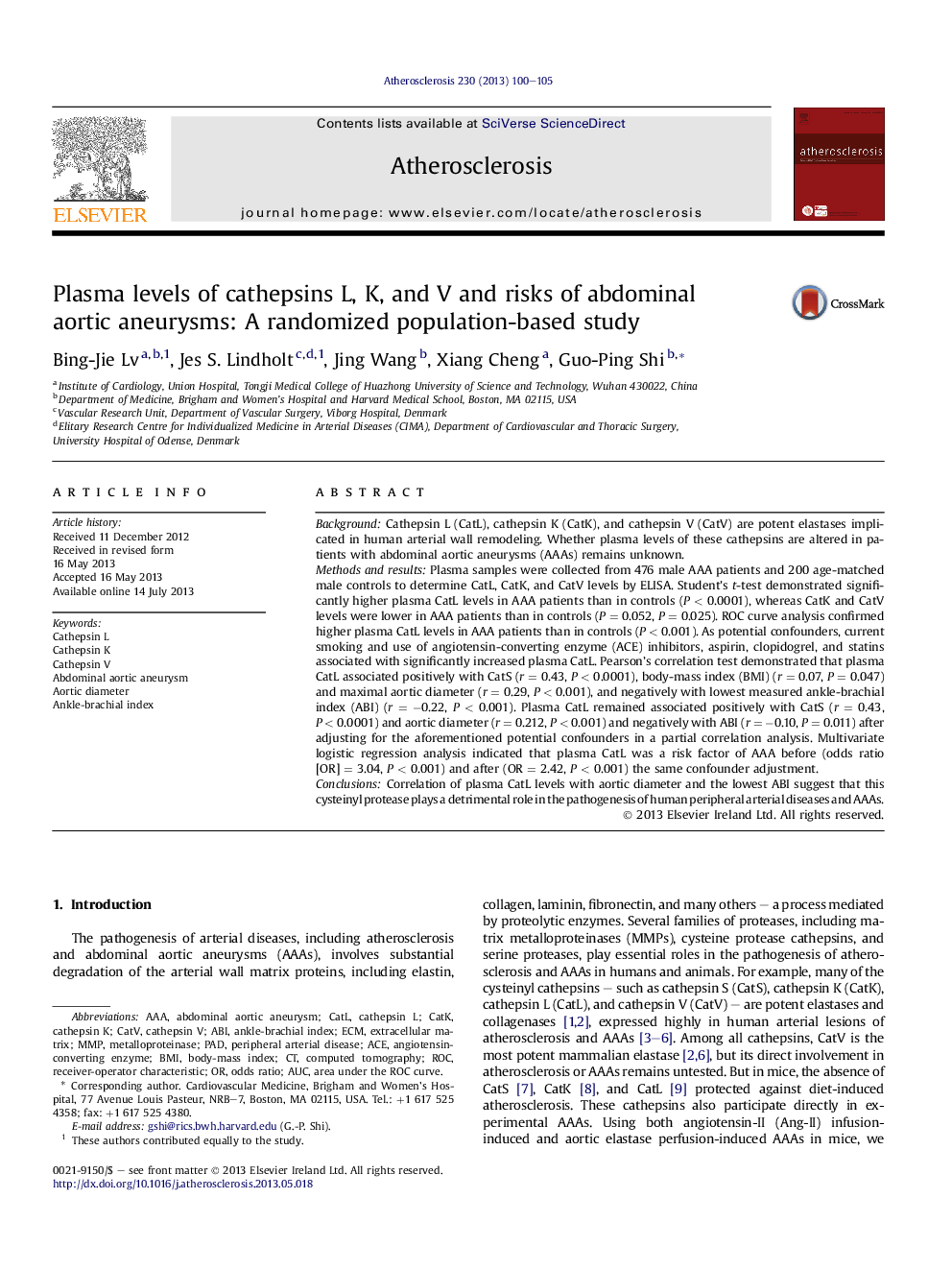| Article ID | Journal | Published Year | Pages | File Type |
|---|---|---|---|---|
| 2892697 | Atherosclerosis | 2013 | 6 Pages |
•We determined plasma cathepsin L, cathepsin K, and cathepsin V levels in 476 male patients with abdominal aortic aneurysm (AAAs) and 200 age-matched male controls.•We demonstrated significant higher plasma cathepsin L levels in patients with AAA than in controls.•We demonstrated that plasma cathepsin L correlated with maximal aortic diameter and measured ankle-brachial index in this population.•We demonstrated that plasma cathepsin L was a significant risk factor of human AAAs and peripheral arterial occlusive disease.
BackgroundCathepsin L (CatL), cathepsin K (CatK), and cathepsin V (CatV) are potent elastases implicated in human arterial wall remodeling. Whether plasma levels of these cathepsins are altered in patients with abdominal aortic aneurysms (AAAs) remains unknown.Methods and resultsPlasma samples were collected from 476 male AAA patients and 200 age-matched male controls to determine CatL, CatK, and CatV levels by ELISA. Student's t-test demonstrated significantly higher plasma CatL levels in AAA patients than in controls (P < 0.0001), whereas CatK and CatV levels were lower in AAA patients than in controls (P = 0.052, P = 0.025). ROC curve analysis confirmed higher plasma CatL levels in AAA patients than in controls (P < 0.001). As potential confounders, current smoking and use of angiotensin-converting enzyme (ACE) inhibitors, aspirin, clopidogrel, and statins associated with significantly increased plasma CatL. Pearson's correlation test demonstrated that plasma CatL associated positively with CatS (r = 0.43, P < 0.0001), body-mass index (BMI) (r = 0.07, P = 0.047) and maximal aortic diameter (r = 0.29, P < 0.001), and negatively with lowest measured ankle-brachial index (ABI) (r = −0.22, P < 0.001). Plasma CatL remained associated positively with CatS (r = 0.43, P < 0.0001) and aortic diameter (r = 0.212, P < 0.001) and negatively with ABI (r = −0.10, P = 0.011) after adjusting for the aforementioned potential confounders in a partial correlation analysis. Multivariate logistic regression analysis indicated that plasma CatL was a risk factor of AAA before (odds ratio [OR] = 3.04, P < 0.001) and after (OR = 2.42, P < 0.001) the same confounder adjustment.ConclusionsCorrelation of plasma CatL levels with aortic diameter and the lowest ABI suggest that this cysteinyl protease plays a detrimental role in the pathogenesis of human peripheral arterial diseases and AAAs.
